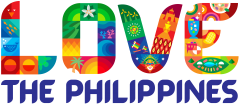It’s no secret that Filipinos love to have fun and get together. With their assigned food in hand, most Filipinos living in the United States usually gather in one place to celebrate and give thanks for the blessings they have received. But how do Filipinos rejoice in their own native land? Here are three festivals in the Philippines you need to experience to know the true nature of Filipinos.
Pahiyas Festival
A way to give thanks for a bountiful harvest in Quezon, Pahiyas festival is celebrated every 15th of May in honor of San Isidro Labrador which is the Patron Saint of farmers in the Philippines. People in Lucban make the most out of this once in a year event by decorating their houses extravagantly. One of the most colorful festivals in the Philippines highlights the Filipinos’ gratitude for the generous year while hoping and praying for another abundant year. Pahiyas means “décor” so the dedicated locals decorate their homes with fruits, vegetables, agricultural products, handicrafts and Kiping. Kiping is a common embellishment made from rice flour which can be grilled or fried for eating after the sought-after festival. The route of the festival changes every year to give chance to other houses and limit decoration expenses for one house. This lovely festival not only showcases a colorful celebration but also the way Filipinos come together and celebrate as one.
Panagbenga Festival
Created as a tribute to the overwhelming beauty of the spring season, Panagbenga is one of the most promoted festivals in the Philippines. Located in the Baguio, the warm welcome of the locals to their avid visitors counters the cold breeze. It started as a rise up to the devastation left by the 1990 Luzon earthquake and eventually became an annual month-long celebration in the city of pines. Panagbenga, in Kankanaey (a dialect in Benguet) means season of blooming or a time of flowering in which they highlight during parades. The yearly flower festival consists of two parades: a Float Parade where multi-colored floats are decorated with flowers of every kind and a street dance parade where dancers are clothed and accessorized with flowers that is inspired by the Bendian, an Ibaloi celebratory dance in the Cordillera Region. Stock yourself with Instagram worthy posts as you’ll be gaining a lot of snaps after attending Panagbenga.
Sinulog Festival
One of the most renowned and sought-after festivals in the Philippines, Sinulog is a major festival in Cebu to honor Santo Niño, the child Jesus, who used to be the patron saint of Cebu. As Cebu was one of the first places in the Philippines to be colonized by the Spaniards, Catholic beliefs were introduced and later on maintained its prevalence making it the first Christianized land in the Philippines. Cebu highlights their transition from having a pagan past to recognizing Christianity through a dance ritual performed in Sinulog. Sinulog translates to “like water current movement” which adeptly describes the forward-backward movement of its dance parade. Like most festivals in the Philippines, it features colorful displays of ceremony and pageantry. What makes Sinulog distinct from other festivals is that street parties are held along the streets at the periphery of the major route while maintaining the sanctity of the grand occasion. Through this festival, you’ll get to experience the undying passion of devoted Catholics while learning the right way to party, Cebuano Style.
Sounds indulging? Contact our travel partners and we’ll make sure you get to join the party of a lifetime.

